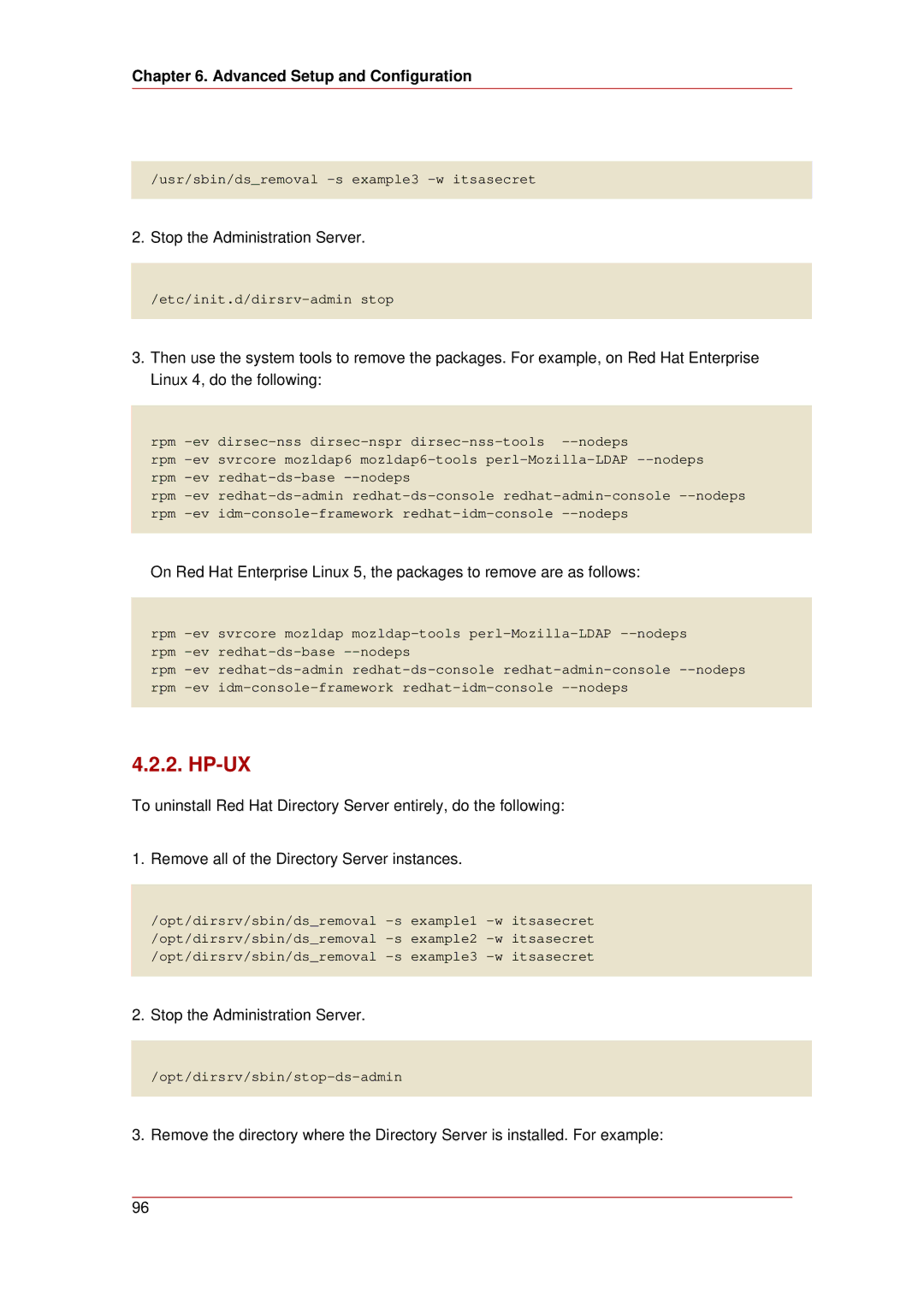Chapter 6. Advanced Setup and Configuration
/usr/sbin/ds_removal -s example3 -w itsasecret
2.Stop the Administration Server.
/etc/init.d/dirsrv-admin stop
3.Then use the system tools to remove the packages. For example, on Red Hat Enterprise Linux 4, do the following:
rpm -ev dirsec-nss dirsec-nspr dirsec-nss-tools --nodeps
rpm -ev svrcore mozldap6 mozldap6-tools perl-Mozilla-LDAP --nodeps rpm -ev redhat-ds-base --nodeps
rpm -ev redhat-ds-admin redhat-ds-console redhat-admin-console --nodeps rpm -ev idm-console-framework redhat-idm-console --nodeps
On Red Hat Enterprise Linux 5, the packages to remove are as follows:
rpm -ev svrcore mozldap mozldap-tools perl-Mozilla-LDAP --nodeps rpm -ev redhat-ds-base --nodeps
rpm -ev redhat-ds-admin redhat-ds-console redhat-admin-console --nodeps rpm -ev idm-console-framework redhat-idm-console --nodeps
4.2.2. HP-UX
To uninstall Red Hat Directory Server entirely, do the following:
1.Remove all of the Directory Server instances.
/opt/dirsrv/sbin/ds_removal -s example1 -w itsasecret /opt/dirsrv/sbin/ds_removal -s example2 -w itsasecret /opt/dirsrv/sbin/ds_removal -s example3 -w itsasecret
2.Stop the Administration Server.
/opt/dirsrv/sbin/stop-ds-admin
3.Remove the directory where the Directory Server is installed. For example:

